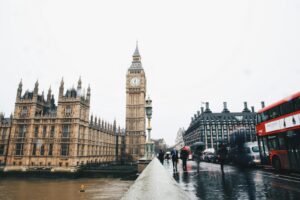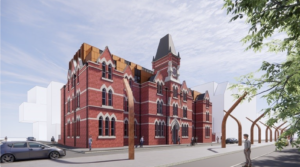Brisbane’s redevelopment: the perils of excluding residents

© Michael Coghlan
Brisbane’s inner city is one of only a few places in the world where there is an industry in literally moving houses. This is because the traditional ‘Queenslander’, as it is called, is made of weatherboard, squats on stumps, and can be lifted intact onto the back of an articulated lorry and carted to its next location.
The site of the former house and garden is typically replaced by a set of higher density townhouses, without much of a garden, or by a much larger dwelling and no garden at all. The result is that, over time, the character of these inner city areas is changing – and existing residents are unhappy. Under the headline ‘Good, bad and downright ugly of Brisbane development’ the writer Madonna King concludes that:
‘At the heart of the unrest is resentment over development applications being approved without any genuine analysis of how it will change the city.’
This observation that residents feel excluded from debating future change reminded me of the UK government’s plan to allow developers to build on 90% of brownfield sites that are identified by local authorities as suitable for housing, without the need for planning permission (subject to approval of ‘a limited number of technical details’). Many of these sites are likely to be in existing areas; the lack of planning (and therefore community) oversight means that housing development may go ahead while unprofitable elements – such as parks – do not, even though these are vital for creating areas where people want to live.
This is not an argument to preserve cities in aspic, but rather a plea to ensure that the balance of power in urban development isn’t tilted disproportionately in favour of developer profit. A case in point is the work of the Bureau of Investigative Journalism and The Guardian: both have critiqued the favourable deals developers have been negotiating with local authorities in London to wriggle out of their obligations to provide affordable housing despite the healthy financial gains they are making.
In Brisbane, research published by Professor Paul Frijters and Cameron Murray has found that rezoning land (enabling a change of use to something with a higher value) in the city was prone to corruption. They concluded that ‘collusion between politicians and landowners about which areas are favourably rezoned’ resulted in the landowner pocketing the increase in value rather than it being captured for wider benefit.
So what can be done to reclaim planning for the wider good? In England, neighbourhood planning provides an opportunity for people to get more involved, but it has largely failed to make an impact in cities. A book published earlier in the year called City Limits suggests that, to engage people in the complexities of urban areas, we need ‘early, sophisticated, sustained and deep’ citizen engagement in plan making and implementation to ‘make tough decisions possible, and to make them stick’. It cites Seattle as an example: at the height of that city’s engagement process on its neighbourhood plan, the council was spending around three-quarters of its planning budget on public participation.
Most local authorities will baulk at a bill of that size, and yet elected members should be wary of a critical mass of citizens who feel they are being ridden over roughshod by politicians watering down their involvement in the planning process. As Madonna King puts it for Brisbane:
‘[The Mayor] can expect to feel the backlash come election time… he needs to listen to many of those who might not have the same means as the developers they are fighting, but boast an equal vote.’













